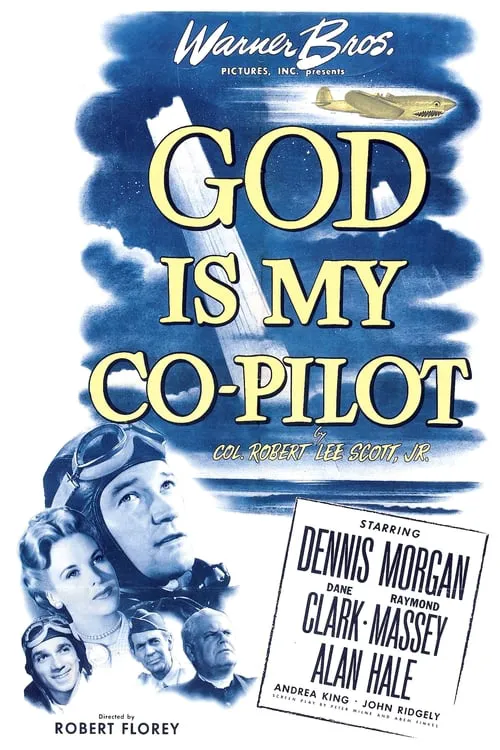God Is My Co-Pilot

Plot
God Is My Co-Pilot, a 1945 war film starring Robert Montgomery, tells the story of Robert L. Scott's experiences as a pilot during World War II. The film is based on Scott's biography, with significant creative liberties taken to enhance the narrative. From the early 1940s, the United States Army Air Forces (USAAF) was actively engaged in the war, fighting against the Japanese in the Pacific. The movie begins with Robert L. Scott, played by Robert Montgomery, a young and ambitious pilot with a passion for flying. Scott's entire life has been about becoming a fighter pilot, and he has spent countless hours training and practicing. However, the USAAF soon determines that Scott's skills are better suited to transport planes, and he finds himself flying over The Hump, a treacherous mountain range in the Himalayas, carrying vital supplies to the Chinese army. As Scott navigates the challenging environment of The Hump, he discovers his true calling – a chance to see action as a fighter pilot. In China, he encounters General Claire Chennault, the legendary commander of the famous Flying Tigers, an elite group of pilots who had been battling the Japanese since 1941. Scott's determination and skills eventually catch General Chennault's attention, and he is offered a chance to fly with the Flying Tigers. Scott's time with the Flying Tigers is nothing short of exhilarating. He is thrown into a world of high-octane flying and intense combat, facing off against the fearsome Japanese pilots. One particular enemy pilot, known as "Tokyo Joe," proves to be a formidable foe, pushing Scott to his limits as they engage in a series of dogfights. The rivalry between Scott and Tokyo Joe becomes a recurring theme throughout the film, with each pilot seeking to outdo the other in the skies. As the story unfolds, Scott's skills and experience grow, and he becomes an integral member of the Flying Tigers. He participates in numerous battles and showcases his bravery and tactical prowess, earning the respect of his comrades and General Chennault. Throughout his experiences, Scott develops a deep appreciation for the camaraderie and shared purpose of his fellow pilots, who have become like a second family to him. One of the most compelling aspects of God Is My Co-Pilot is its portrayal of the human cost of war. The film vividly depicts the harsh realities of combat, the sacrifice of lives, and the emotional toll it takes on those involved. Despite the high-stakes nature of their missions, Scott and his fellow pilots are not merely mindless warriors; they are individuals with families, hopes, and fears, who have dedicated themselves to serving their country. The aerial sequences in God Is My Co-Pilot are some of the film's most memorable moments, expertly capturing the adrenaline-fueled world of wartime pilots. The movie's depiction of the Flying Tigers' unique P-40 Warhawk aircraft has become an iconic representation of the legendary squadron. Throughout the film, the P-40s are shown in all their glory – swooping, diving, and performing spectacular maneuvers, giving the audience a thrilling view of aerial combat. God Is My Co-Pilot ends on a poignant note, as Scott must come to terms with the reality of war and the losses he has suffered. The film concludes on a triumphant note, as Scott reflects on the sacrifices made by himself and his fellow pilots, and the enduring bonds they forged in the skies above China. The movie remains a timeless tribute to the bravery, skill, and sacrifice of those who served during World War II, particularly the daring airmen of the Flying Tigers.
Ulasan
Rekomendasi



